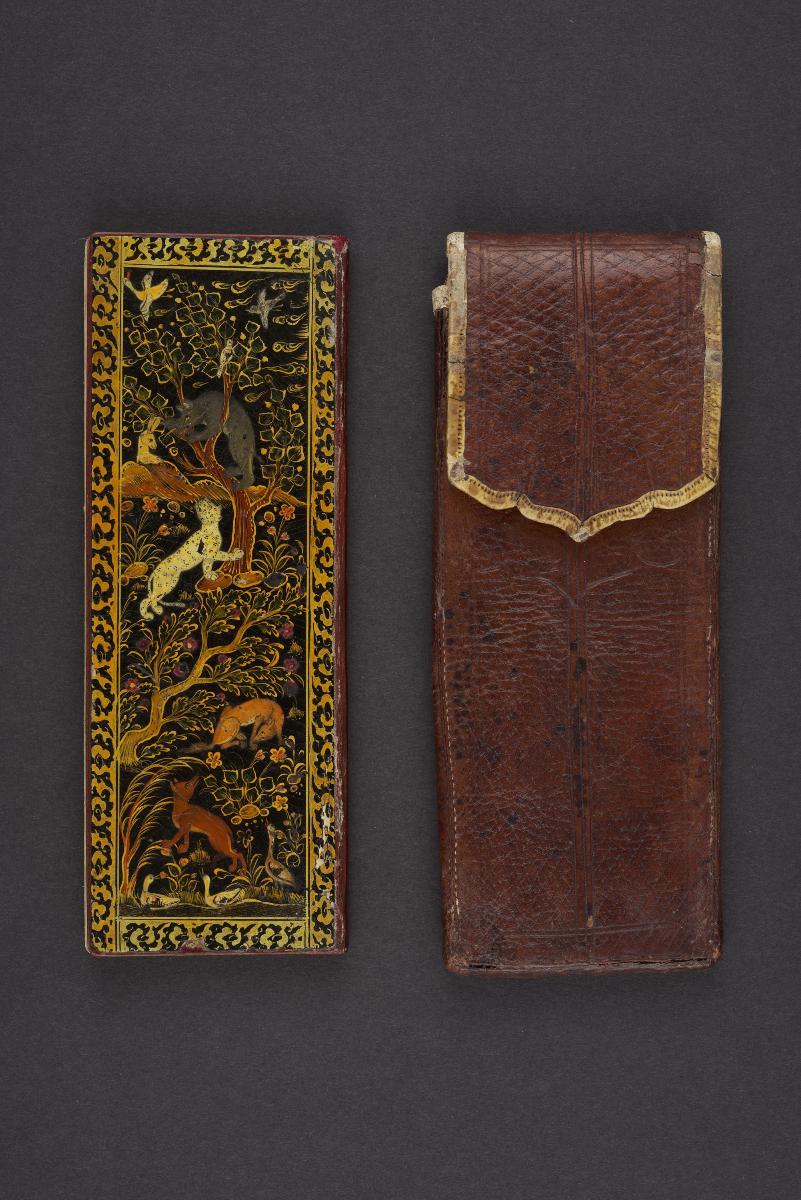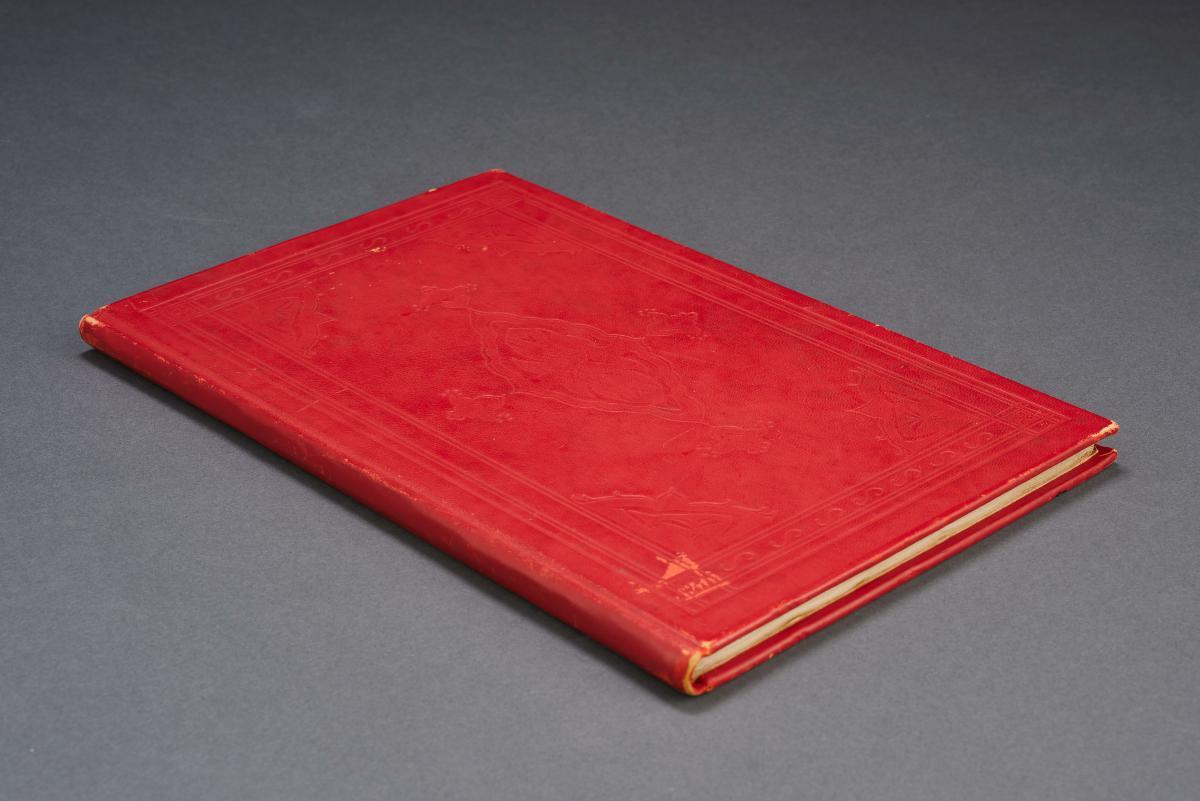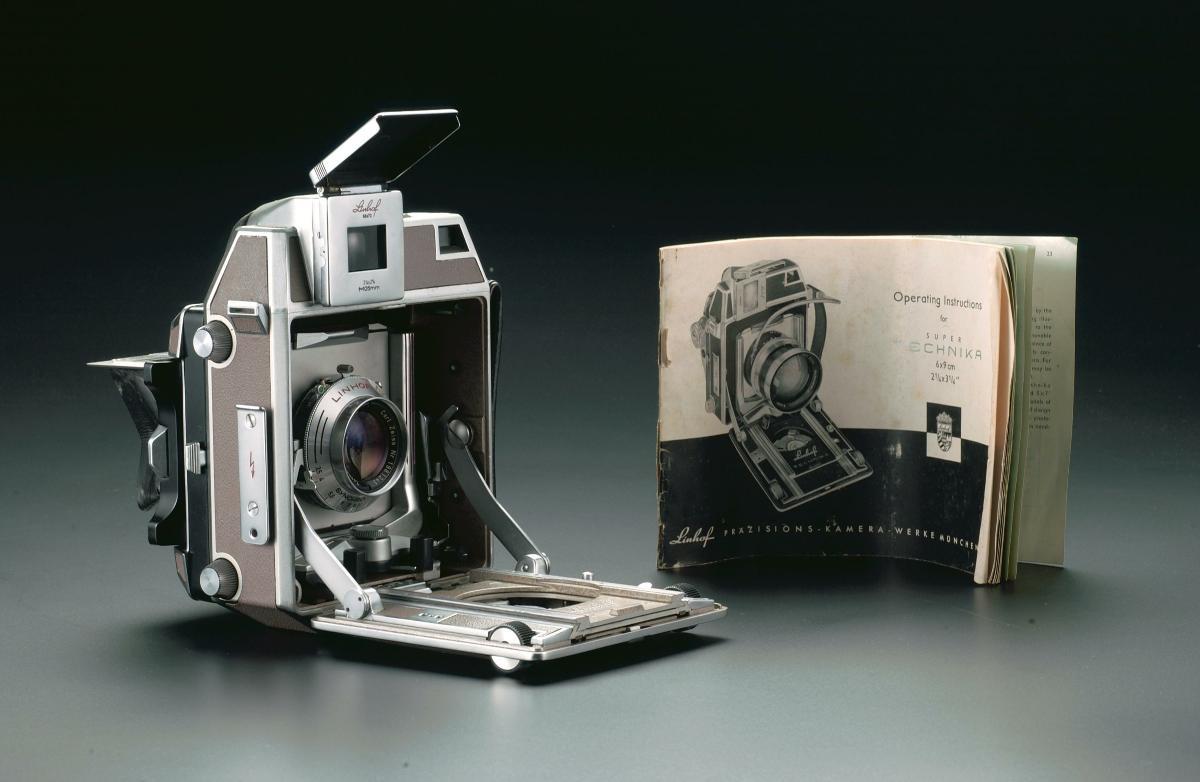This anthology of Persian poetry is bound on the short edge in a narrow, oblong format known as safina. It is pocket-sized so that it can be carried around, ostensibly to record verses as they are being composed or heard in recitation. Although the initial section was composed and copied by the author, Muhammad Rafi Va’iz Qazwini, a Safavid-era poet (d. AH 1089/ 1678-79 CE), different calligraphic hands, signatures and dates suggest that this manuscript had been passed from one poet or patron to another over approximately a hundred years. The result is a collection of texts, decorated in the page margins with scrolling vines or landscape scenes dotted with birds, that reflect Persian literary tastes from the mid-17th century to the end of the 18th century. At the end of the manuscript is a full-page, partial coloured drawing in sparse, strong outlines – an enigmatic portrait of a youth who had taken off his turban and sat under leafy tree, surrounded by books and some fruit. The front and back covers feature lacquered plates where vibrantly-coloured animals and gold-highlighted trees and borders are set against a dark background. This aesthetic convention of juxtaposing gold and colours against black originated from the preceding Timurid dynasty (1307– 1507 CE).

















